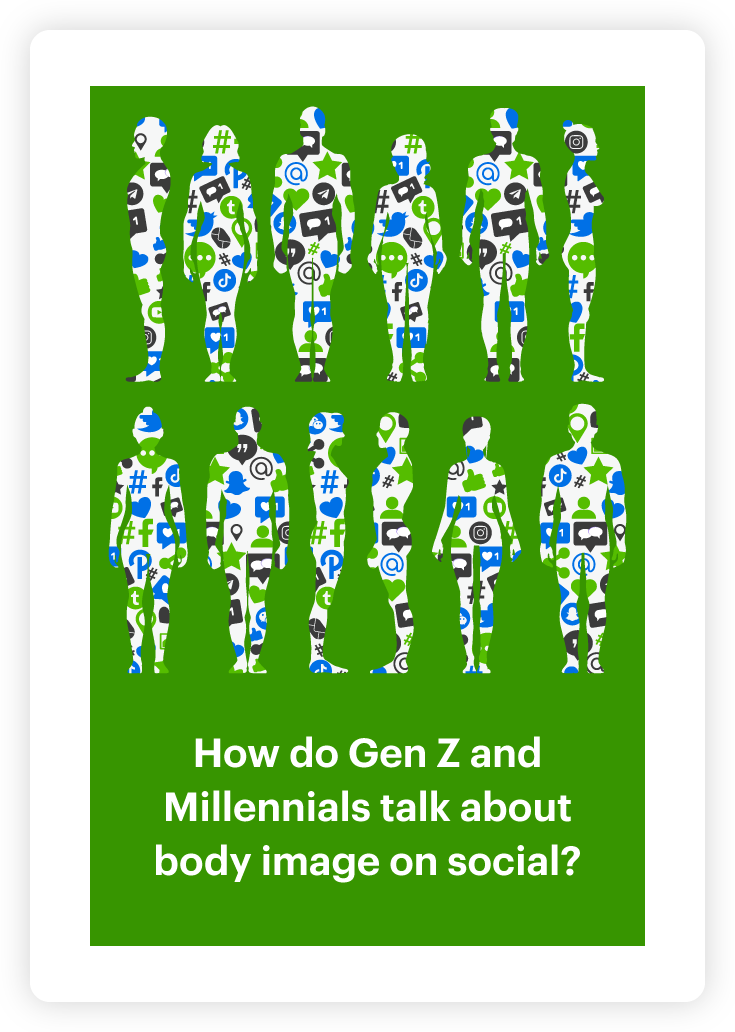Exploring Halloween insights for UK and US audiences
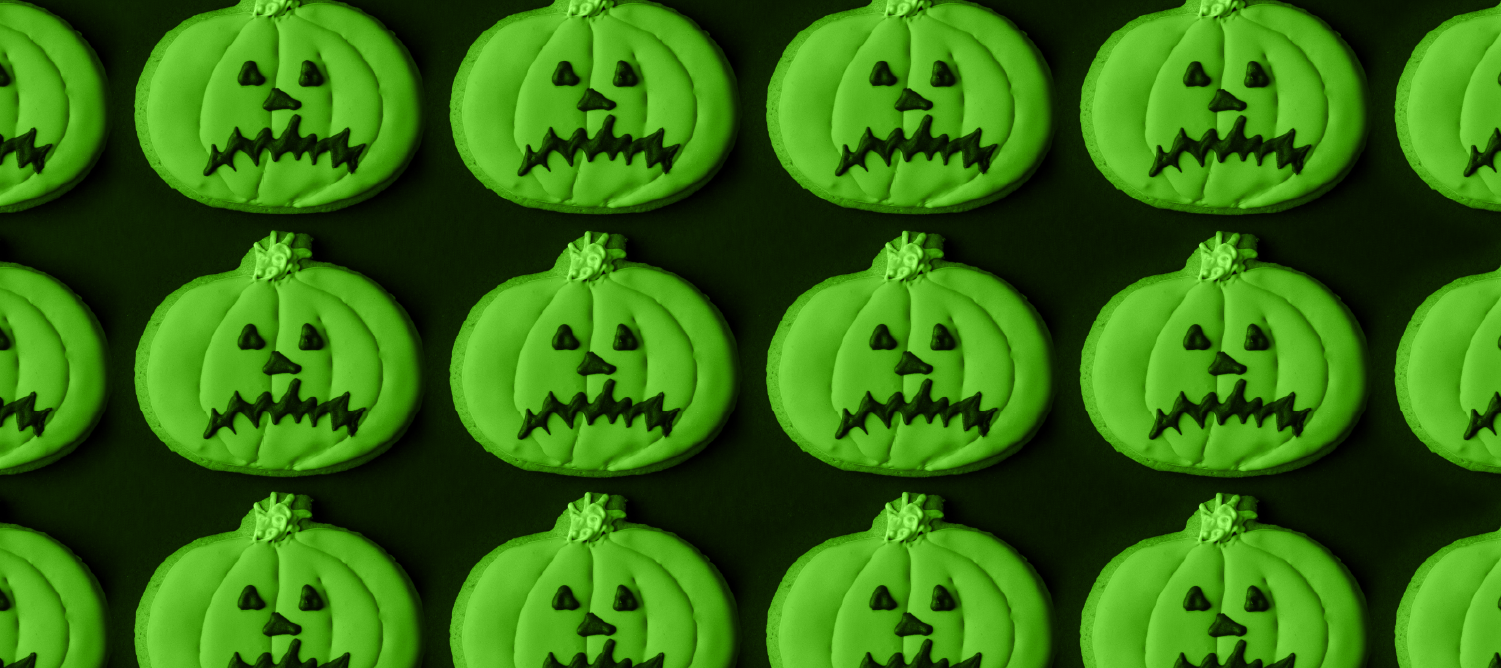
What started as an ancient Celtic holiday, Halloween has evolved into the sugar-filled, pumpkin-spiced, tacky-costumed celebration we know today.
As an American working for a British company, I’m only too aware of the cultural divide between Americans and the Brits. Over the last week, I’ve noticed differences in the way my colleagues have been talking about their plans for Halloween and so I decided to add a layer of science and have some fun with Relative Insight. I used a social listening platform to pull thousands of tweets from the US and UK for the entire month of October and compared the language in the platform.
Relative Insight compares two textual data sets – in this case, tweets from two geographic audiences – to pinpoint the topics, words, phrases, grammar and emotion unique to each. This technique looks beyond universal language you’d expect to see from both audiences, revealing unique Halloween insights for each demographic.
Here’s what our social media analysis found:
US
Our Halloween insights revealed that in the US, Halloween isn’t just one day – it’s all month. Halloween has become a season of its own, eclipsing the entire month of October. Tweets in the US were more likely to use the phrases halloween month, halloween season, and halloween weekend.
This extended celebration is seen in the prominence of decorations. Americans are more likely to invest time and money into adorning the interior and exterior of their homes with spooky decor in order to feel festive all month.
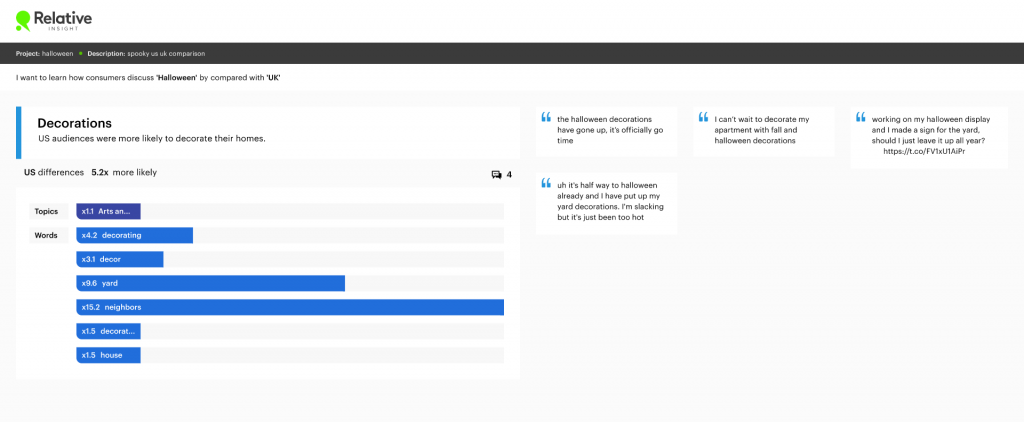

A quintessential part of the holiday, costumes were a popular topic of conversation for US audiences. Americans were more likely to plan elaborate costumes weeks in advance, with a different one for every day of the Halloweekend.


A particular type of costume was significantly more common in the US – if you know what I mean, as Americans were more likely to talk about sexy and partially naked costumes. These costumes weren’t restricted to inherently scandalous characters, however and with the addition of short skirts and low cut tops, Americans made Jar Jar Binks, Steve Bannon and even minions sexy.
UK
In contrast, our Halloween insights revealed that British Halloween celebrations were a little more wholesome. It was often referred to as a children’s holiday, filled with pumpkin–flavoured treats and biscuits. Americans and Brits were just as likely to talk about sweets (aka candy), but used different words to talk about them.
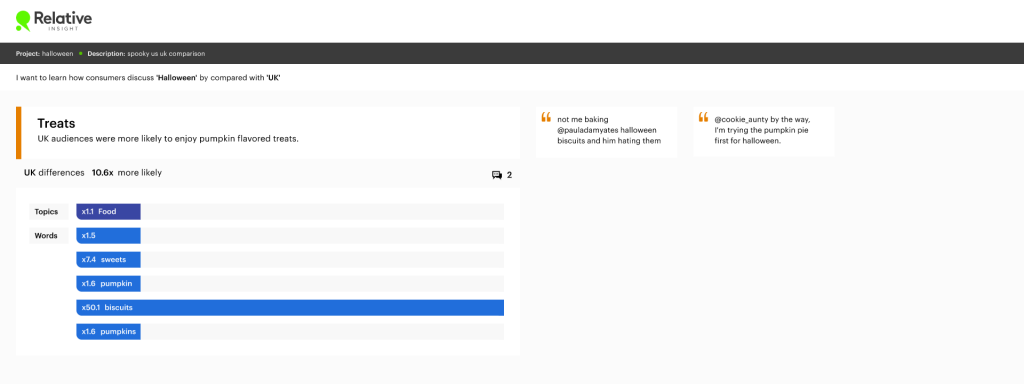

UK audiences were also more likely to use Halloween-specific adjectives like spooky, ghoulish, ghostly and creepy. This language was often used to promote events and activities, and is exclusive to the month of October and the Halloween season.
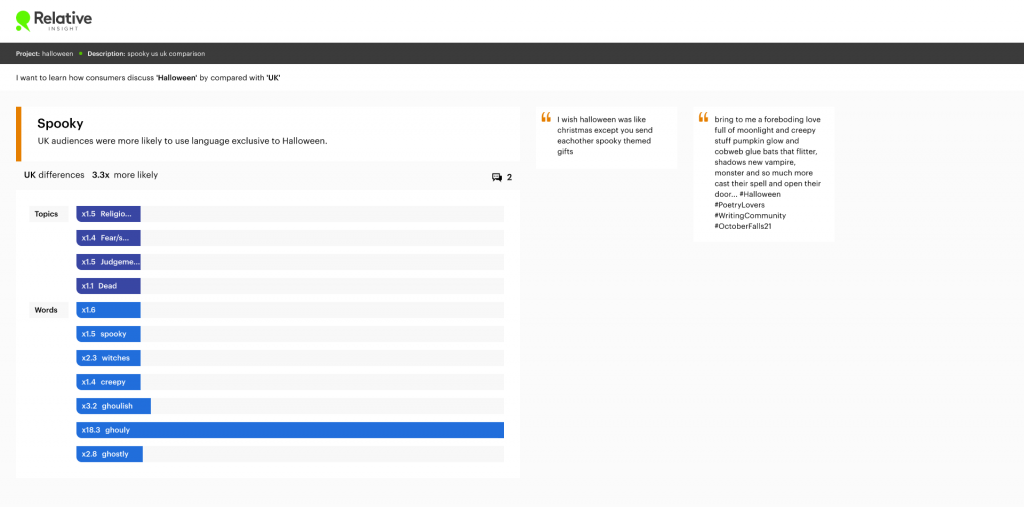

Scary entertainment including movies, films, books and music were popular among UK audiences. Twitter users mentioned classics like Beetlejuice, The Addams Family, Halloween… and Jurassic Park? Okay that one might be up for debate.
Relative Insight can compare the language used by audiences of different geographic locations, demographics, age groups and more to uncover the opinions and preferences that make a target audience unique.
